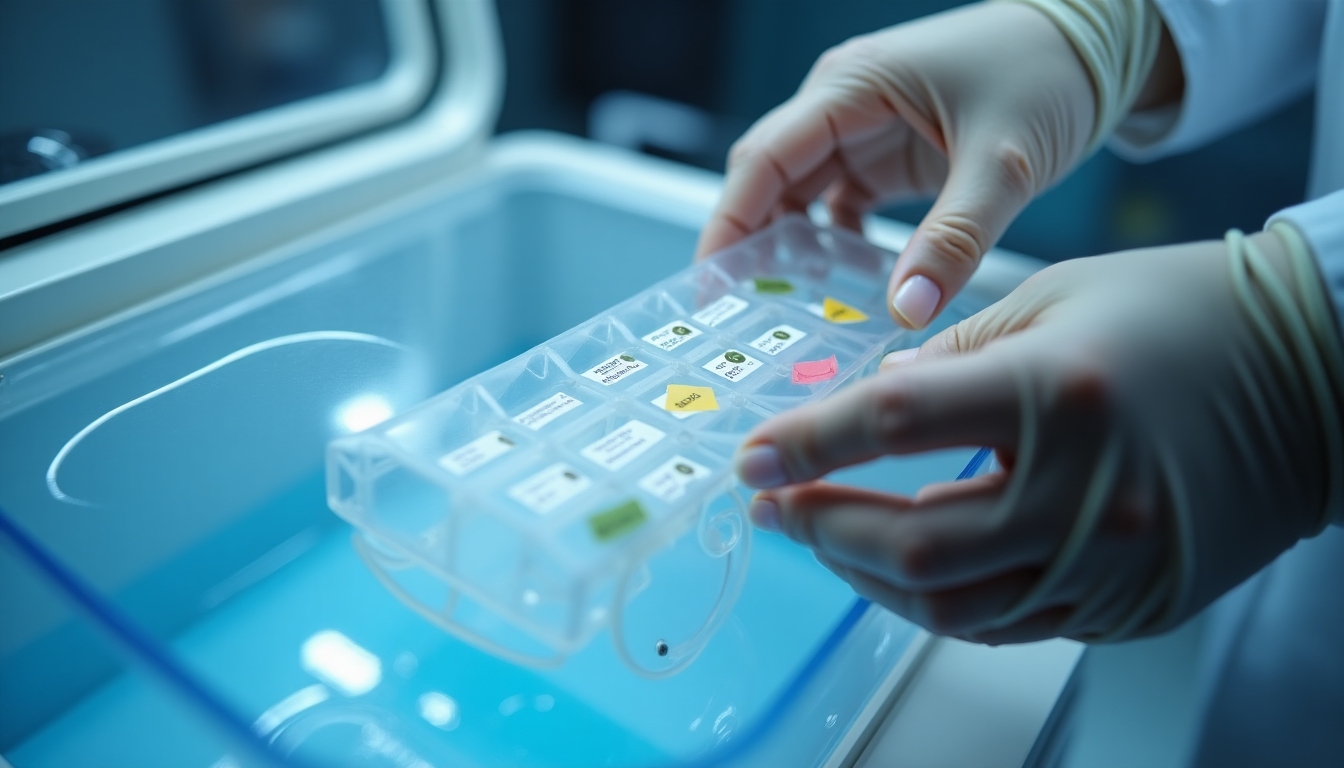Fertility Preservation for Genetic Conditions: A Comprehensive Guide
April 5, 2025, 5:25 p.m.
Fertility preservation for genetic conditions offers hope for individuals whose ability to have children might be affected by genetic disorders. Whether due to the condition itself or treatments like chemotherapy, this article covers the options, success rates, and real-life experiences to help you make informed choices.
What Is Fertility Preservation for Genetic Conditions?
Genetic conditions can challenge your dreams of starting a family. Some disorders affect reproductive organs directly, while others require treatments that harm fertility. Fertility preservation steps in to save eggs, sperm, or embryos for later use. It’s a way to keep your options open.
This process matters because it gives you control. If you’re facing a genetic condition, you might feel overwhelmed. Knowing you can preserve your fertility can ease some of that worry. Let’s dive into how it works and what it means for you.

Why Fertility Preservation Matters
Infertility is a real risk with many genetic conditions. For example, conditions like Turner syndrome can affect ovarian function, while sickle cell disease might require treatments that damage sperm or eggs. Fertility preservation lets you act before it’s too late.
The process isn’t just about science—it’s about hope. It’s for anyone who wants biological kids someday, whether you’re single, partnered, or still figuring things out. The earlier you start, the better your chances.
Fertility Preservation Options
There are several ways to preserve fertility. Each has its own process, costs, and fit for different situations. Here’s a breakdown:
- Egg Freezing: Doctors stimulate your ovaries to produce eggs, then freeze them. It’s common for women facing genetic conditions or treatments.
- Sperm Freezing: Men provide a sample, which is frozen for later use. It’s quick and effective.
- Embryo Freezing: Couples use IVF to create embryos, then freeze them. It’s a team effort.
- Ovarian Tissue Freezing: Doctors remove and freeze ovarian tissue. It’s newer and mostly for young girls or women who can’t freeze eggs.
Your choice depends on your age, health, and plans. A fertility specialist can guide you.

Fertility Preservation Success Rates
How well do these methods work? Success varies by method and your personal situation. Here’s a table to help:
| Method | Success Rate | Cost Range (USD) |
|---|---|---|
| Egg Freezing | 30-60% per cycle (best under 35) | $10,000 - $15,000 |
| Sperm Freezing | High, depends on sperm quality | $1,000 - $2,000 |
| Embryo Freezing | 40-50% per transfer (best under 35) | $12,000 - $20,000 |
| Ovarian Tissue Freezing | Experimental, limited data | Varies |
These numbers are averages. Your doctor can give you a clearer picture based on your health. For more details, check out studies from the American Society for Reproductive Medicine.
Personal Stories: Real Experiences
Hearing from others can make this less daunting. Take Sarah, a 28-year-old with a genetic disorder requiring chemo. “I was scared I’d never have kids,” she says. “Freezing my eggs gave me hope. It was tough, but I’d do it again.”
Then there’s Mark, 32, with a condition that might cause infertility. “Sperm freezing was easy,” he shares. “It’s like insurance for my future family.”
These stories show the emotional side. It’s not just about procedures—it’s about keeping dreams alive.

The Emotional Side of Fertility Preservation
Facing infertility because of a genetic condition is hard. You might feel sad, angry, or lost. That’s normal. Preserving fertility can lift some of that weight, but it’s still a big decision.
Talking to someone helps. Friends, family, or a counselor can listen. Support groups connect you with people who get it. You’re not alone in this.
Steps to Get Started
Ready to explore fertility preservation? Here’s how:
- See a Specialist: Find a fertility doctor to assess your options.
- Learn Your Risks: Ask how your condition or treatments affect fertility.
- Check Costs: Look into insurance or grants to help pay.
- Get Support: Talk to loved ones or a counselor.
- Make a Plan: Decide what fits your life goals.
Start early—time matters. The National Infertility Association has resources to guide you.

Genetic Counseling: A Key Step
Genetic counseling helps you understand your condition and its impact on fertility. A counselor explains risks, like passing the condition to your kids. They might suggest preimplantation genetic diagnosis (PGD) to pick healthy embryos.
It’s like having a map for your journey. Counseling gives you facts to plan with confidence.
What to Ask Your Doctor
Feeling unsure? Here are questions to bring:
- How will my condition affect my fertility?
- Which preservation method is best for me?
- What are my fertility preservation success rates?
- How soon should I start?
- Are there side effects?
Write down answers. It helps you think clearly later.

Costs and Coverage
Fertility preservation isn’t cheap. Egg freezing might cost $10,000 or more, while sperm freezing is closer to $1,000. Insurance varies—some plans cover it, some don’t.
Look for help. Clinics offer payment plans. Nonprofits like Fertility Within Reach list grants. Don’t let money stop you from asking.
Final Thoughts
Fertility preservation for genetic conditions is a powerful tool. It turns uncertainty into possibility. With options like egg freezing, sperm freezing, and more, you can protect your chance to build a family.
Take it one step at a time. Talk to experts, lean on support, and decide what’s right for you. Your future is worth it.
